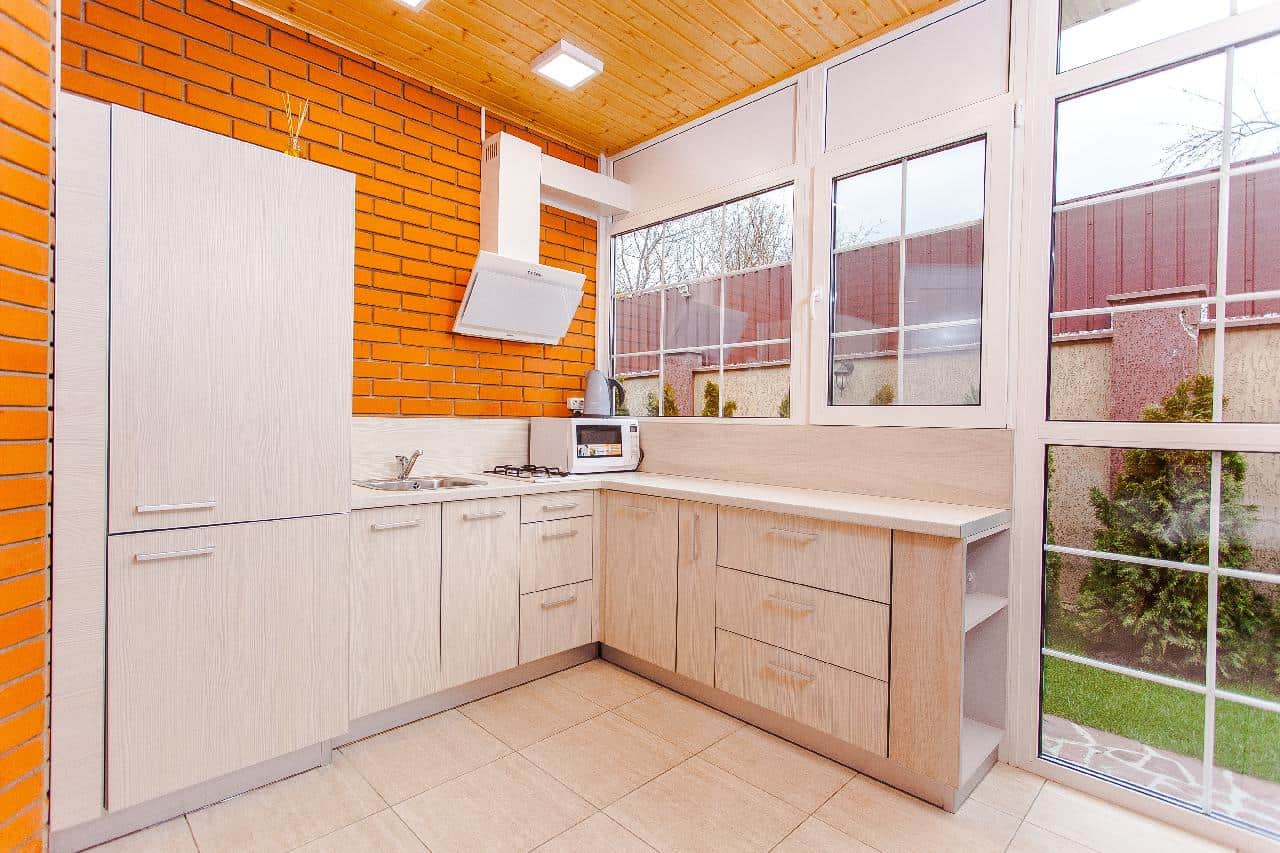Painting your home’s exterior can be an exciting project, but it’s also fraught with potential pitfalls. Whether you’re a DIY enthusiast or considering hiring professionals, knowing what mistakes to avoid can save you time, money, and a whole lot of headaches. Let’s dive into the colorful world of exterior painting and explore the 22 errors you should steer clear of – because nobody wants their house to look like a kindergartner’s art project gone wrong!
Before we get into the nitty-gritty, let’s take a quick look at some common exterior painting mistakes and their potential consequences:
| Mistake | Consequence |
|---|---|
| Skipping surface preparation | Paint peeling and bubbling |
| Using low-quality paint | Fading and frequent repainting |
| Painting in direct sunlight | Uneven drying and visible brush strokes |
| Ignoring weather conditions | Poor adhesion and potential water damage |
| Forgetting to remove outlet covers | Messy edges and unprofessional look |
According to a recent survey by the National Association of Home Builders, exterior painting is one of the most popular home improvement projects, with 36% of homeowners planning to tackle it in the next two years. However, the same study found that 42% of DIY painters reported being unsatisfied with their results. Yikes! That’s a lot of sad-looking houses out there.
Speaking of sad-looking houses, let’s lighten the mood a bit. Imagine your neighbor Bob decided to paint his house without any preparation. He slapped on some bargain-bin paint in the middle of a heatwave, ignored the forecast of rain, and forgot to cover his prized petunias. The result? A patchy, peeling mess that looks like it was attacked by a flock of color-blind seagulls. Don’t be like Bob. Read on to learn how to avoid the 22 most common exterior painting errors and keep your home looking fabulous!
Preparation Pitfalls
1. Skipping the cleaning step
Your house has been exposed to the elements for years, collecting dirt, grime, and even mold. Painting over this mess is like trying to put makeup on a muddy face. Take the time to power wash or scrub your home’s exterior thoroughly. This will ensure the new paint adheres properly and looks its best.
2. Ignoring repairs
Cracks, holes, and rotting wood are not just unsightly – they’re also ticking time bombs for your paint job. Filling in these imperfections isn’t just about aesthetics; it’s about protecting your home from further damage. Take the time to repair any issues before you start painting, or you’ll be back at square one sooner than you think.
3. Forgetting to sand
Smooth surfaces are the secret to a professional-looking paint job. Sanding might seem like a tedious extra step, but it’s crucial for removing old paint flakes and creating a surface that new paint can really stick to. Plus, it’ll help you avoid that bumpy, amateur look that screams “I did this myself… badly.”
4. Neglecting to prime
Primer is the unsung hero of painting. It helps the paint adhere better, provides a uniform base color, and can even help cover up dark colors or stains. Skipping this step is like going out without deodorant – you might think no one will notice, but they will, and it won’t be pretty.
Paint Problems
5. Choosing the wrong paint
Not all exterior paints are created equal. Some are designed for wood, others for masonry or metal. Using the wrong type can lead to peeling, cracking, or just plain ugly results. Do your homework and pick the right paint for your specific surface. Your house will thank you.
6. Skimping on quality
Cheap paint might seem like a good idea for your wallet, but it’s a disaster for your home. Low-quality paint fades faster, chips easier, and often requires more coats. Invest in good paint now, and you’ll save money (and headaches) in the long run.
7. Improper mixing
Paint separation isn’t just for art class. If you don’t mix your paint thoroughly, you could end up with uneven color or streaks. Give that can a good shake (or stir) before you start, and mix it again periodically as you work. Your walls should be one smooth color, not a patchwork quilt.
8. Using the wrong tools
A dollar store brush might save you a few bucks, but it’ll cost you in the final look. Invest in quality brushes, rollers, and other tools appropriate for your project. The right tools will make the job easier and give you a much more professional finish.
Application Accidents
9. Painting in direct sunlight
The sun might be great for tanning, but it’s terrible for painting. Direct sunlight can cause paint to dry too quickly, leading to visible brush strokes and poor adhesion. Work in the shade or on overcast days for best results.
10. Ignoring the weather forecast
Rain, high humidity, or extreme temperatures can ruin a fresh paint job faster than you can say “oops.” Check the weather forecast and plan your painting days accordingly. Ideal conditions are mild temperatures and low humidity.
11. Applying too thick a coat
When it comes to paint, more isn’t always better. Thick coats can lead to drips, sags, and longer drying times. Multiple thin coats will give you a smoother, more durable finish. Patience is key here – let each coat dry completely before adding the next.
12. Forgetting to maintain a wet edge
Painting isn’t a race, but you do need to keep a “wet edge” to avoid lap marks. This means slightly overlapping your last stroke with each new one before the paint starts to dry. It might slow you down a bit, but the seamless finish will be worth it.
Detail Disasters
13. Neglecting to tape off areas
Freehand painting might work for Picasso, but for the rest of us, painter’s tape is a must. Use it to protect trim, windows, and any other areas you don’t want painted. Your crisp, clean lines will make your paint job look professional.
14. Forgetting to remove hardware
Door knobs, light fixtures, and other hardware aren’t meant to be painted. Remove them before you start, or cover them carefully with tape and plastic. It’s an extra step that will save you from a sloppy-looking finish.
15. Overlooking the importance of caulk
Caulk is like the secret weapon of painting. It fills in gaps and cracks, preventing moisture from getting behind your paint. Take the time to apply fresh caulk around windows, doors, and other joints before painting. Your paint job will look better and last longer.
16. Painting out of order
There’s a method to painting madness. Start at the top and work your way down, doing the siding before the trim. This way, any drips or splatters will be covered up as you go. Planning your approach can save you a lot of touch-up work later.
Safety Slip-ups
17. Ignoring ladder safety
A fall from a ladder can turn your painting project into a hospital visit. Make sure your ladder is on stable ground, maintain three points of contact, and never overreach. If you can’t safely reach an area, it’s time to get a taller ladder or call in the pros.
18. Forgetting protective gear
Paint fumes and splatters aren’t just annoying – they can be harmful. Wear safety goggles to protect your eyes, a mask to avoid inhaling fumes, and gloves to keep your hands clean. Your body will thank you for the extra protection.
19. Neglecting proper ventilation
Paint fumes can make you dizzy or sick if you’re not careful. When painting, keep windows open and use fans to circulate air. If you’re using oil-based paints, the need for ventilation is even more crucial. Fresh air is your friend during a painting project.
Finishing Fumbles
20. Not allowing enough drying time
Patience is indeed a virtue when it comes to paint drying. Rushing to add a second coat or remove tape before the paint is fully dry can ruin your hard work. Follow the manufacturer’s instructions for drying times, and when in doubt, wait a little longer.
21. Failing to clean up properly
Don’t let your painting tools become casualties of your project. Clean brushes, rollers, and other equipment promptly after use. Proper cleaning will extend the life of your tools and save you money in the long run.
22. Forgetting to save leftover paint
Future touch-ups will be a nightmare if you don’t have matching paint. Save some of your leftover paint in a well-sealed container, clearly labeled with the color name and where it was used. Your future self will thank you when it’s time for touch-ups.
You’ll be well on your way to a professional-looking paint job that’ll make your neighbors green with envy (unless, of course, you painted your house green – then they’ll just be envious). Happy painting, and remember: when in doubt, hire a pro. Your house (and your sanity) will thank you!
Discover more from Futurist Architecture
Subscribe to get the latest posts sent to your email.




